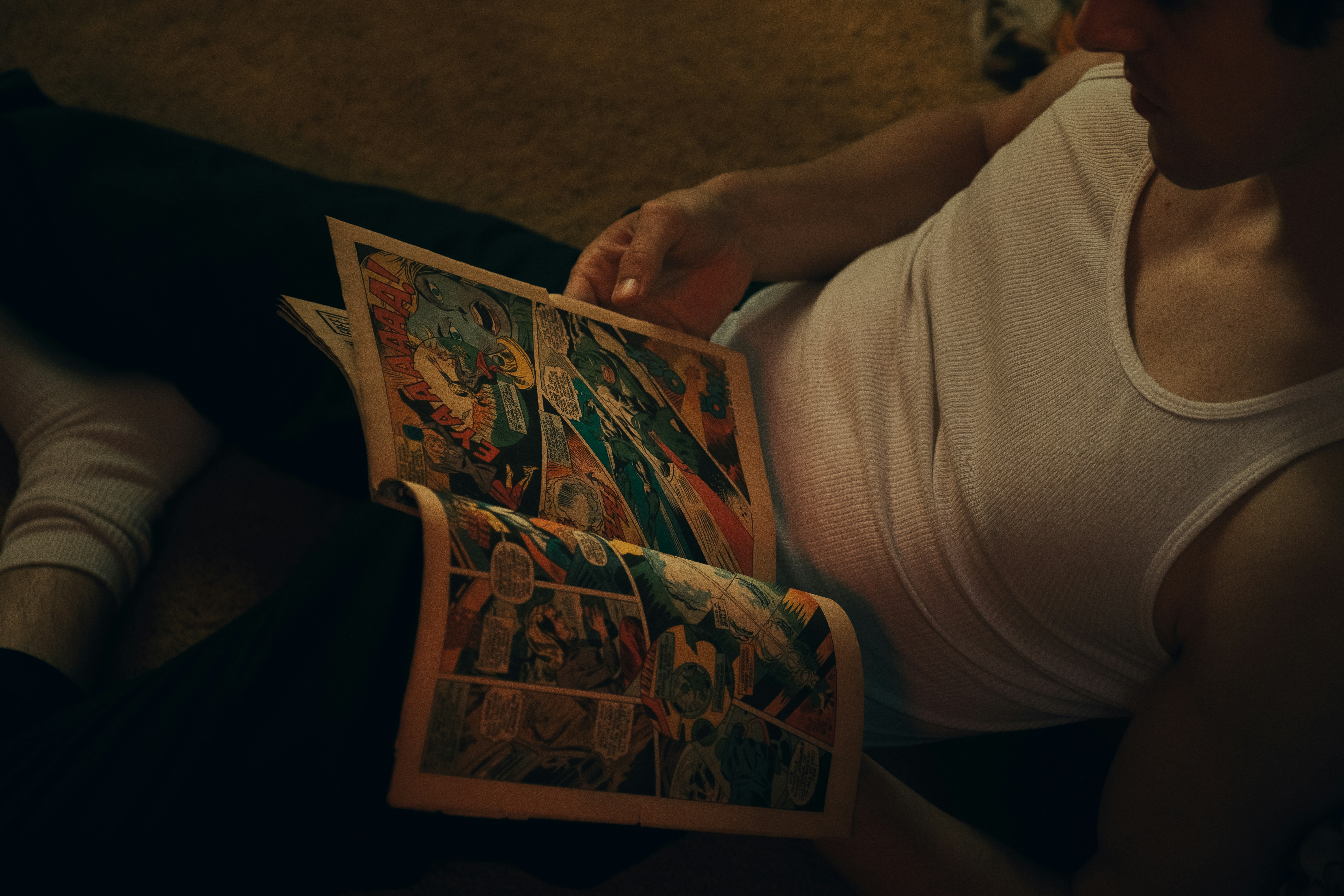What is Comic Illustration and How to Start Creating?
by WriteSeen
Comic illustration marries visuals with text to create engaging stories. This art form combines characters, settings, and plots into narratives that captivate and inspire.
It ranges from classic American and European comics to Japanese Manga and South Korean Manhwa, each with a unique style and cultural influence. Comic illustration isn't confined to the page; it's a dynamic force informing films, games, and modern media.
Explore techniques that shape this art, from traditional inking to advanced digital tools. Dive into opportunities with platforms like WriteSeen to connect, collaborate, and showcase your talent. Read on to unlock deeper insights and inspiration.
The Evolution of Comic Illustration
Comic illustration offers a vivid tapestry of creativity that has grown immensely over the years. This evolution isn't just about style—it’s a story of cultural shifts and innovative artistry. Understanding these changes can enhance your appreciation and inspire your own creative journey. Let's dive deeper into this captivating history.
From Early Beginnings to Iconic Eras
The origins of comic illustration can be traced back to the 19th century with publications like "The Adventures of Obadiah Oldbuck" in 1842—marking the first inklings of sequential storytelling. Comics then transformed dramatically during the Golden Age, a period from the late 1930s to the early 1950s. This was when we saw the birth of iconic superheroes such as Superman and Batman, characters that remain bedrocks of popular culture today.
Jump forward to the mid-20th century, and the Silver Age of comics took hold. This era is defined by a surge of creativity with richer narratives and layered characters. It provided audiences with emotional depth and offered a mirror to societal changes. This expansion displayed how powerful comics can be in reflecting and shaping culture.
Influential Forces and Movements
Through the decades, a few pivotal individuals and movements revolutionized comic illustration. Visionaries like Will Eisner transformed the medium into an art form, pushing boundaries with his work on "The Spirit." The late 20th century witnessed the rise of the graphic novel, primarily credited to artists such as Alan Moore and Art Spiegelman, who infused literary depth into their creations.
- Graphic Novels: Expanded the scope of subjects and unveiled comics as serious literary works.
- Independent Movements: Offered fresh, diverse perspectives, challenging mainstream narratives.
- Cultural Exchange: Enabled global influences that enriched styles and storytelling nuances.
These shifts have continually broadened comics' scope and impact. As a creator, understanding these developments helps in harnessing that same transformative power in your work.

Key Elements of Comic Illustration
To craft compelling comic art, you need to master several fundamental elements. Each component plays a pivotal role in storytelling and capturing the reader’s imagination. Let’s take a closer look at what brings a story to life on the page.
Essential Ingredients
-
Line Art: It's the backbone of comic illustration. Lines define the characters and scenes. They capture movement, set the mood, and draw the reader into the story. Whether meticulously detailed or artistically abstract, the style of line art determines the narrative's tone.
-
Color Theory: Colors awaken emotions and shape perceptions. By combining hues strategically, illustrators can evoke specific feelings—joy, mystery, tension. A well-thought-out palette can spotlight characters, intensify background elements, or transition the mood between scenes seamlessly.
-
Panel Composition: Panels are the building blocks of your comic. The layout—whether dynamic or minimalistic—guides the reader’s eye and controls the pacing of the story. Effective composition can enhance drama or lull the reader into a reflective pause.
-
Text Integration: Speech bubbles, captions, and fonts are integral to storytelling. They bring dialogue to life and provide essential context. The style of text should complement the narrative voice and flow seamlessly with the imagery.
Mastering these elements allows you to communicate complex narratives with clarity and emotion, ensuring your stories captivate from start to finish.
Popular Styles in Comic Illustration
Comic illustration isn't limited to one style or genre. Across the globe, unique traditions influence the way stories are told. Knowing these can help you find your niche or expand your style.
Global Inspirations
-
Manga: This Japanese style typically appears in black and white, renowned for its intricate linework and emotional depth. Manga's distinct right-to-left reading format and diverse genres make it a global favorite.
-
American Comics: Dominated by superhero narratives, these often feature bold colors and dynamic action sequences. From Marvel to DC, these stories are embedded in cultural history, offering a blend of fantasy and reality.
-
European Bandes Dessinées: Celebrated for their artistic sophistication. These comics, like "Tintin," present a wide range of styles—from adventure to realism—offering a fresh and varied perspective on storytelling.
-
Indie Comics: A realm where creativity meets diversity. Independent comics break traditional molds with innovative themes and experimental styles.
By exploring these varied styles, you gain insights into diverse storytelling techniques, opening new avenues for your artistic expression.
The Role of Comic Illustrations in Modern Media
Comic illustrations have expanded beyond their traditional platforms, making significant inroads into modern media. They’ve become a vital component in movies, video games, and digital interactions. Understanding this integration is crucial for any creator looking to stay relevant and reach broader audiences.
Cross-Platform Influence
-
Film Adaptations: Comics provide rich narratives and complex characters ripe for adaptation. Blockbuster successes like "The Avengers" showcase the seamless translation of comic elements onto the big screen.
-
Video Games: Titles like "Batman: Arkham Asylum" use comic-style visuals and storytelling techniques to create immersive experiences, marrying gameplay with narrative depth.
-
Digital Comics: Platforms such as Webtoon allow instant access to comics worldwide, fostering fresh narratives accessible through smartphones and tablets. This connectivity brings a global audience to your work, expanding reach beyond traditional print.
Comic illustrations' adaptability ensures they remain at the heart of storytelling media, evolving to meet the demands of new technologies and audience preferences. By harnessing these modern opportunities, you can craft stories that resonate far and wide, engaging fans across platforms and inviting new ones into your creative world.

Techniques and Tools for Comic Illustrators
Embracing the right techniques and tools can elevate your comic illustration skills, transforming vision into vibrant stories that captivate audiences. From traditional methods to cutting-edge technology, each approach offers distinct advantages to enhance your work.
Traditional to Digital: Bridging Techniques
It's no secret that both traditional and digital techniques offer unique benefits. Exploring both can enrich your creative process.
-
Traditional Inking: This method relies on tools like pens and brushes to create depth. It offers the tactile satisfaction and nuance of hand-drawn art, allowing for intricate detail and personal touch.
-
Digital Software: Programs like Adobe Photoshop and Clip Studio Paint provide flexibility and efficiency. They're great for experimenting with color and structure, offering advanced features like layering and editing.
-
Graphics Tablets: Devices like Wacom and iPad Pro mirror natural drawing motions while offering the precision of digital editing. They are versatile, perfect for artists on the move thanks to their portability.
Future of Illustration Tools
Technology continues to evolve. Emerging tools integrate artificial intelligence, promising new avenues for creativity.
- AI Tools: These can streamline mundane tasks such as coloring or shading, allowing you to focus on creative details. While they're currently adjuncts, they point towards an innovative future where tech enhances, rather than replaces, artistic skill.
These tools open doors for experimenting with your style, making the creation process smoother and more adaptable to individual workflows.
Opportunities for Comic Illustrators in WriteSeen
Comic illustrators can discover numerous opportunities on WriteSeen that boost creativity and visibility. By engaging with a community designed for creators, you access unique tools and platforms to help elevate your craft.
Building Connections and Creative Expansion
WriteSeen is more than just a platform; it's a thriving community for artists to flourish. Here’s how you can harness the potential:
-
Showcase Your Portfolio: Create a compelling profile to grab the attention of industry professionals seeking fresh talent. Stay in control while gathering peer feedback to enhance your work.
-
Collaboration and Insights: Engage in meaningful collaborations with other creatives and expand your narrative horizons. The feedback tools help you refine your projects through shared perspectives.
-
Discovery and Recognition: Participate in events and contests to gain visibility and recognition. This openness translates into greater opportunities, paving the way for potential collaborations and professional growth.
By taking advantage of the features on WriteSeen, you ensure both creative development and career advancement.
Tips for Aspiring Comic Illustrators
Transitioning from aspiration to realization in comic illustration requires dedication, practice, and adaptability. With focus and the right approach, you can build a strong creative foundation.
Essential Steps to Ignite Your Career
Kickstarting your journey with the right strategies can make all the difference:
-
Consistent Practice: Draw every day to refine your skills. Focus on anatomy, movement, and expression to develop a distinctive style that resonates.
-
Explore Networking: Attend workshops and comic conventions to connect with peers and professionals. These interactions provide insights into industry trends and open doors to collaborative ventures.
-
Enhance Your Online Presence: Create a sophisticated digital portfolio, whether through social media or personal platforms. Showcasing finished and in-progress works can attract opportunities and feedback.
-
Experiment: Push boundaries by playing with different styles, genres, and storytelling techniques. This adaptability fuels creativity and helps you stand out.
-
Study Established Artists: Analyze influential works to understand storytelling structures and artistic techniques. Learn from them, then forge your unique path.
By incorporating these practices, you can embark on a creative journey full of discovery and growth.
Conclusion
Comic illustration is a powerful art form where tradition meets innovation. From pen and ink to digital software, the tools may evolve, but the heart of storytelling remains the same. By learning its history and mastering key techniques, you gain the skills to leave a lasting creative impact.
Whether you're illustrating superheroes, manga, or indie comics, this field offers countless ways to express your vision. Explore different styles, experiment boldly, and keep refining your craft as you grow as an artist.
Join WriteSeen to share your work, connect with other illustrators, and be part of a global community where your creativity can truly shine. Your journey in comic illustration starts now—make it unforgettable.
TAGS